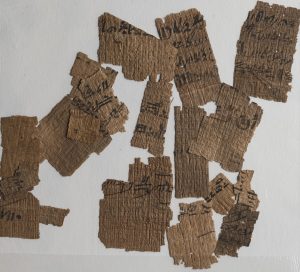
Since the start of my studies in Egyptology, my passions have been divided equally between the fields of papyrology, philology, and museology. Hieroglyphic and hieratic studies (with a focus on funerary and ritual texts in their social context) comprise my main research interests, though I am also interested in the material features of ancient Egyptian scripts, from the New Kingdom through to Roman Egypt. As a philologist and papyrologist with experience in museology, I have ten years of experience in the virtual reconstruction of papyrus documents, the study of their materiality, and the edition of hieratic texts stored in various papyrus collections in Europe. I am currently also supervising two PhD projects by Martina Landrino and Andrea Fanciulli, both of whom are collaborators on the ‘Crossing Boundaries’ Project.
The core focus of the Turin section of the ‘Crossing Boundaries’ Project is the conservation of the papyrus fragments and documents, the description of their material characteristics, and the production of high-resolution digital images (so that the papyri can be worked on remotely by other team members). As director of the ‘Turin Papyrus Online Platform’ (TPOP), I manage the development of the online platform and supervise the conservation of the papyrus material. Together with Juan José Archidona Ramírez, I scan the papyrus material and record the metadata concerning their physical features in TPOP.
Academic research often results in very specialised studies that are hard for non-specialists to understand. Together with the communications office of the Museo Egizio, I am working on providing a behind-the-scenes picture of the ‘Crossing Boundaries’ Project which is targeted at non-specialists. This can be found on the museum’s website and its social media platforms. There, visitors can learn about the project, the papyri, and the Egyptologists working on them, as well as the innovative use of technology to study the papyri.
